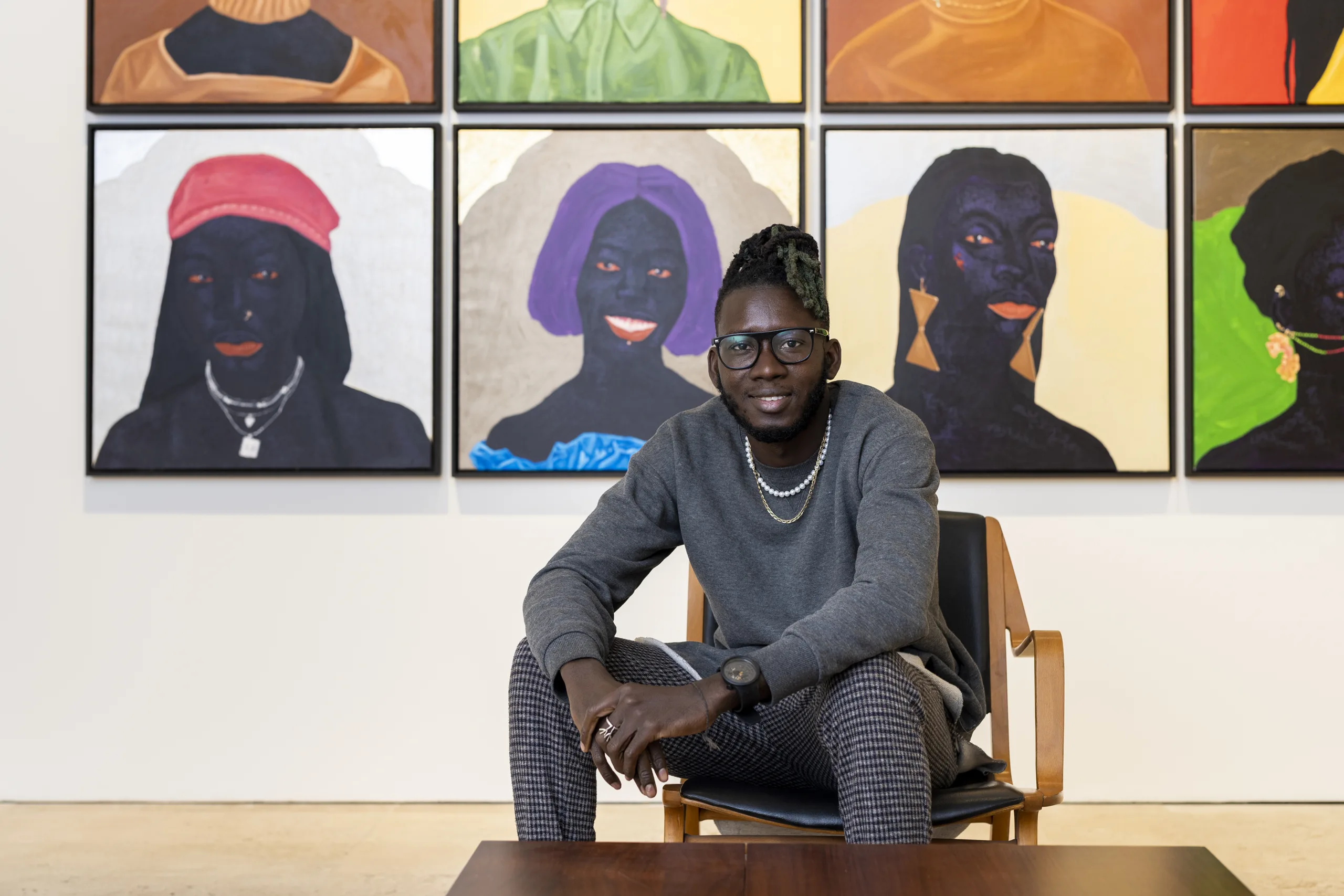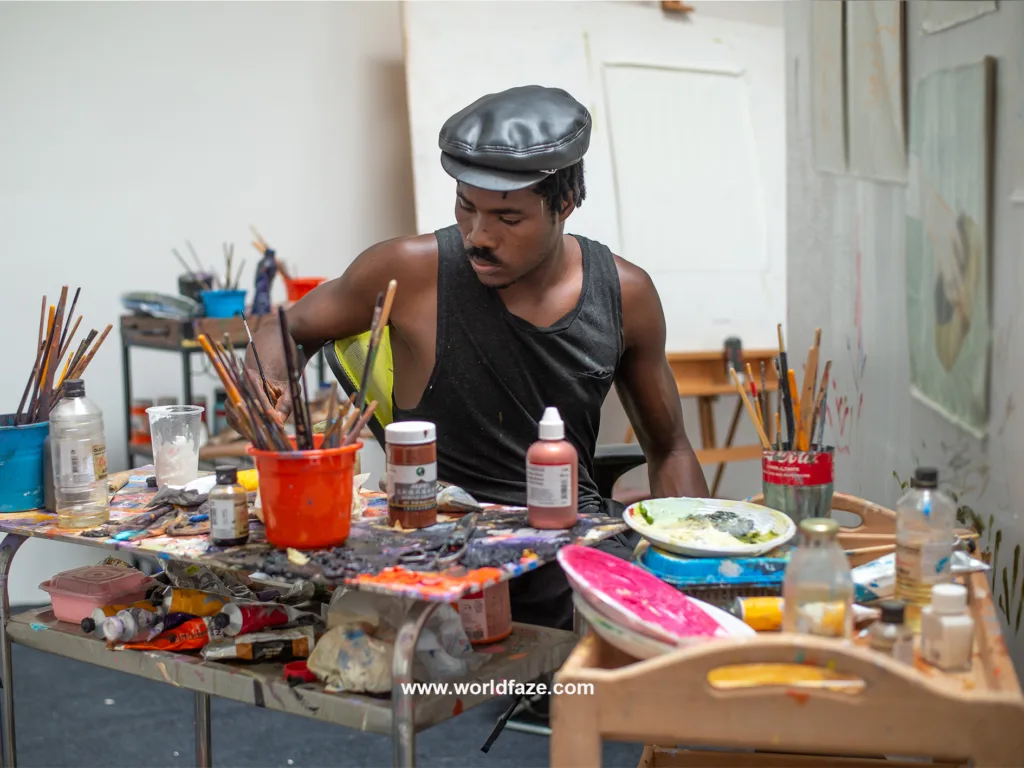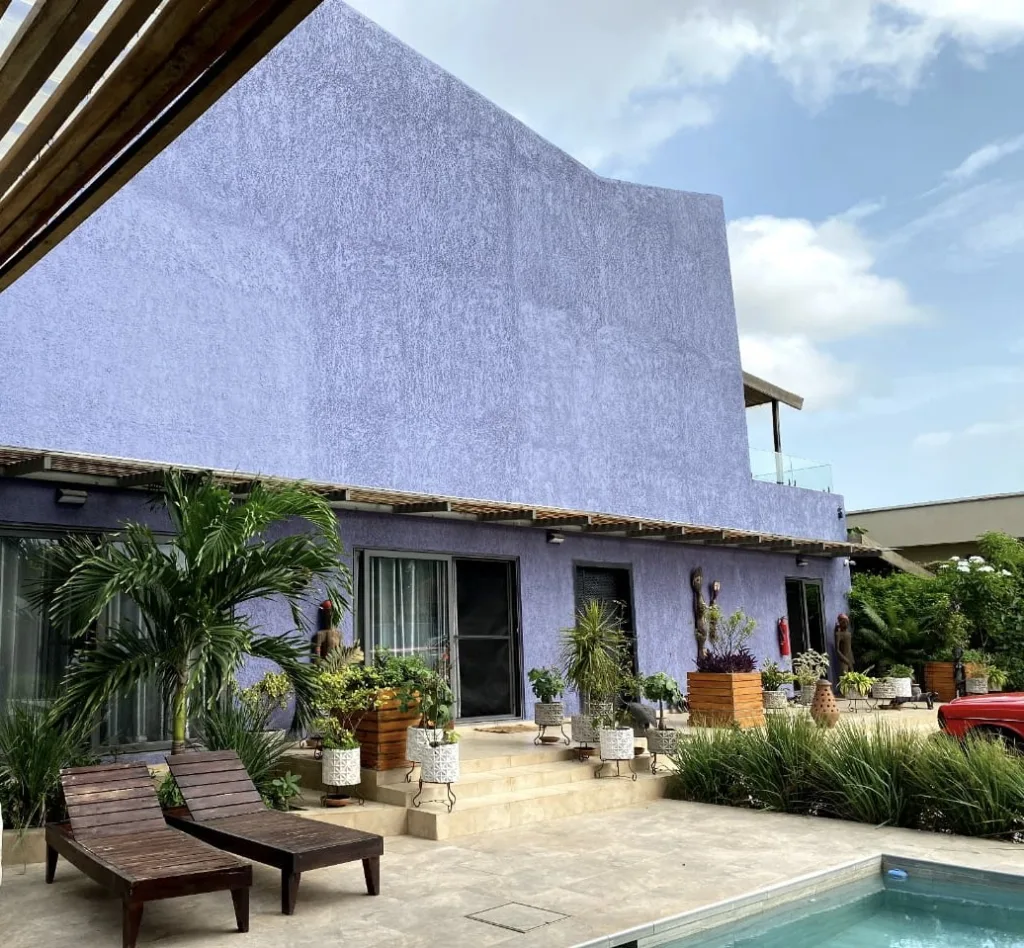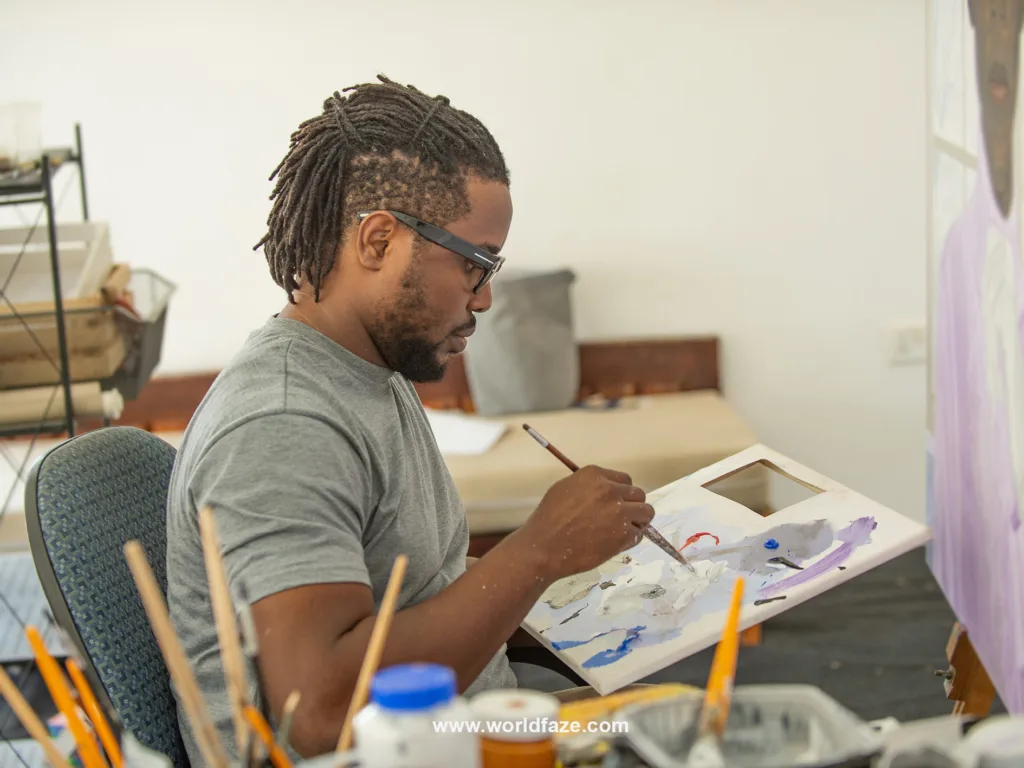With a focus on sustainability, growth, and professional development, the WorldFaze’s clean and contemporary design offers a haven for exhibitions, seminars, and artist residencies. It seeks to encourage interactions, cross-disciplinary cooperation, and artistic experimentation among artists. The founder and artist himself, Kwesi Botchway, was inspired to establish a space where artists could interact, share knowledge, and create. On August 19, 2023, the studio will formally open its doors. Daniel Nartey Tetteh and Jephthah Bentsil Kobiah, the current resident artists, will have an exhibition.
A.S: What motivated the need to establish the art space and how has it evolved since its inception?
K.B: The idea behind me creating a studio and also a residence space was during my practice and journey as an artist in Ghana. You know, finding space to work and also finding space to be active back then was very difficult because we have very few galleries, and me being an indigenous artist in Ghana, I know how the struggle is and I know how hard it is for artists to find space to even showcase their work. Whilst I was working on that, I said, if I’m successful, I would create a space for artists to come together, share ideas, work together, inspire each other, to add up to the art ecosystem in Ghana.

A.S: I know the opening is in August. What do you hope between now and August before the artists showcase?
K.B: The residency allows the artist to be in the space and create life. So that they can have a personal connection with their work. After three months of residency, what we do is a solo show for each artist, to also help the artist to navigate their works and stories. Through a very conceptual context, to aid them in reaching out to galleries, to have a sustainable career.

A.S: How does the art residency space foster collaboration and experimentation between the two artists you currently have?
K.B: When two creatives come together, it becomes interesting. They share ideas, in their words. Learning from one another. The other artists also learn from the other ones. I thought that being together as artists would help them to create, to expand their sense of thinking and experimentation.
A.S: Have they done anything together thus far in terms of experimentation?
K.B: It’s not like they are in the same space trying to create on the same body of work. They are artists, but they have different inspirations and they are exploring different bodies of work. Although, I feel like there is some sort of communication within their practice. Each artist acts, each artist questions, during their working process. I feel like it helps because it’s like they all have different experiences. it’s interwoven within their working space. Like this one wants to learn something from there and this one also wants to learn something from here.

A.S: Two artists working together, having conversations, practicing and getting each other’s opinions on it. How do you envision the role of the residency space in shaping the art scene in Accra?
K.B: The whole idea is to contribute to the art ecosystem in Ghana. We have so many artists but I believe we have even fewer spaces. I feel like it’s my duty as an artist who has had the fortune to cross borders having been successful in the international market to help in our own way. To create infrastructures that can help artists and also document artists that are coming up, not only documenting, but also giving them space and helping them in shaping their artistic career and practice. Thanks to the space we can offer the artists who are working with us stay, it’s more like we work with them. If they need ideas, they contact us. We also help them to broaden their practice. Not just giving them the space to work, but also we help them in a way of experimentation. Any ideas that they have, we help them through that.

A.S: I’ve found that there’s a lot of space for established artists but not that much for the up-and-coming ones. That being said, how do you pick the artist that you want to use for your residency? I’m understanding this residency will finish in three months, so there will be another cycle.
K.B: The idea about picking our artist was to do something like an open call for artists to apply not just in Ghana but across African countries, the Western world too. This has been a very good start. I had some artists that I think are brilliant and also need the opportunity to also showcase their talents, so most of them, I know personally. They were all grateful to join but the whole idea is actually to do like an open call. Our main focus will be on the open call for artists to apply, because we also look at artist series and artists who have been practicing for like a year or two.

A.S: How do the resident artists contribute to the studio’s creative community in terms of the presence for mentorship? Do you have visitors yet? Are you open to visitors now?
K.B: We have had a lot of visitors, curators, writers, galleries, museums. We are also looking at collaborating with these establishments. The Museum of Ohio wants to also be part of the initiative to also help artists have an artist exchange.
A.S: What should we expect from the showcase in august?
K.B: I think the artists have done a lot of work, which is strong. We still also advise them on how to also approach the selling point. They should be done with everything soon. We’re also looking at getting curators from our side to also be involved too. To shape their narrative and all that. We are trying to wrap up, but so far I think they have done very well.
A.S: I’m sure the grand opening will be amazing.


